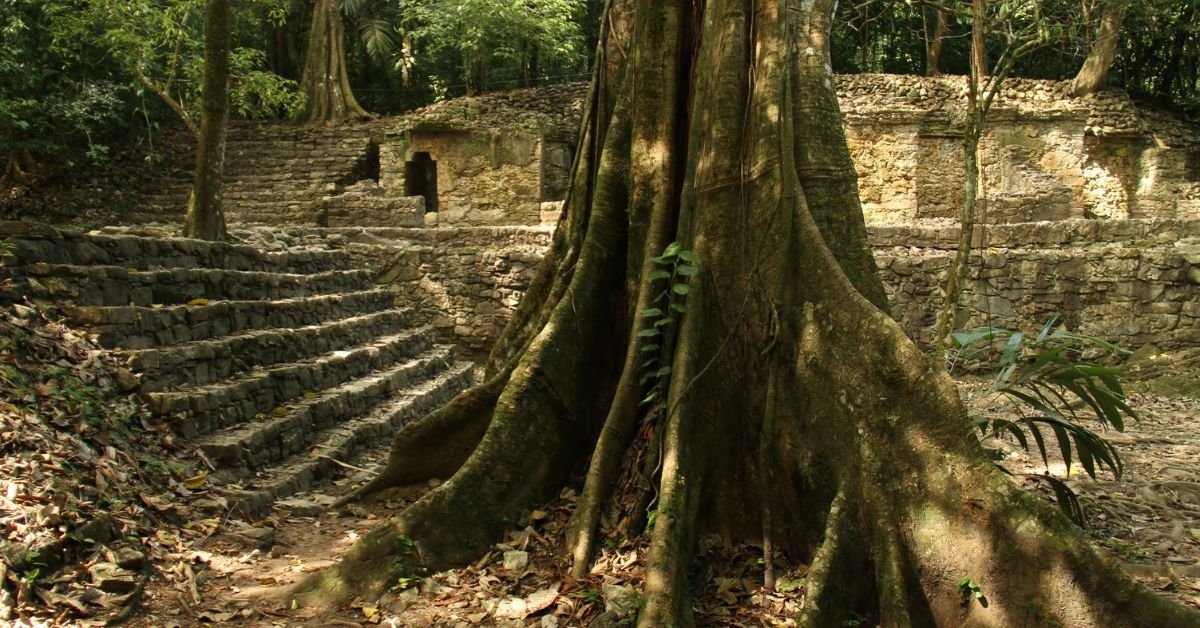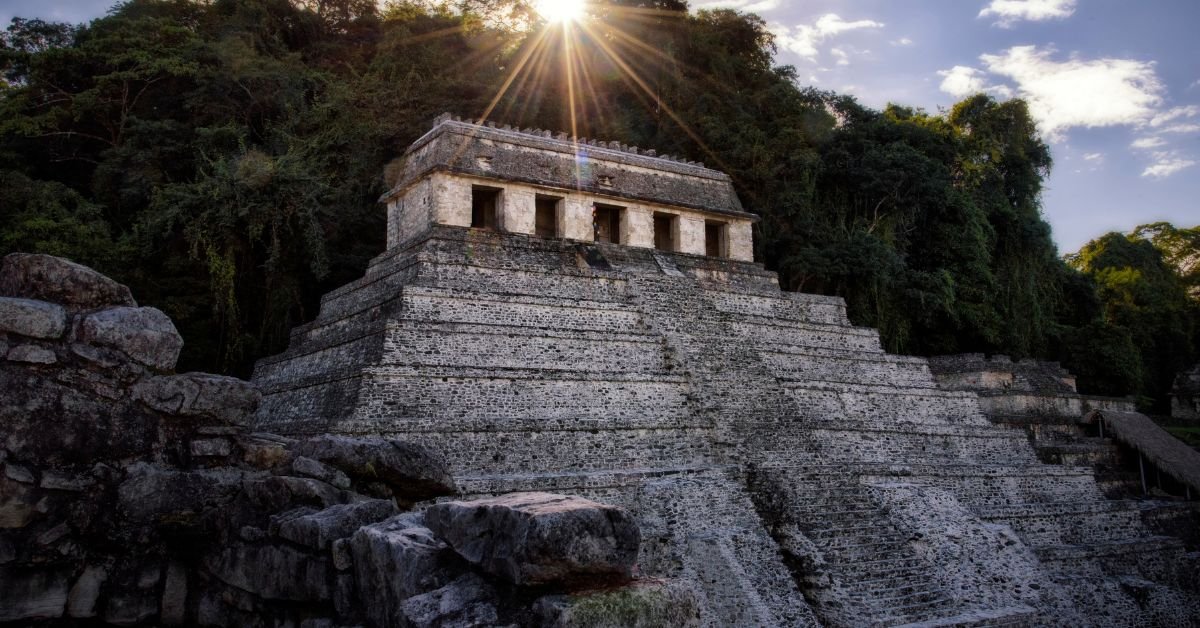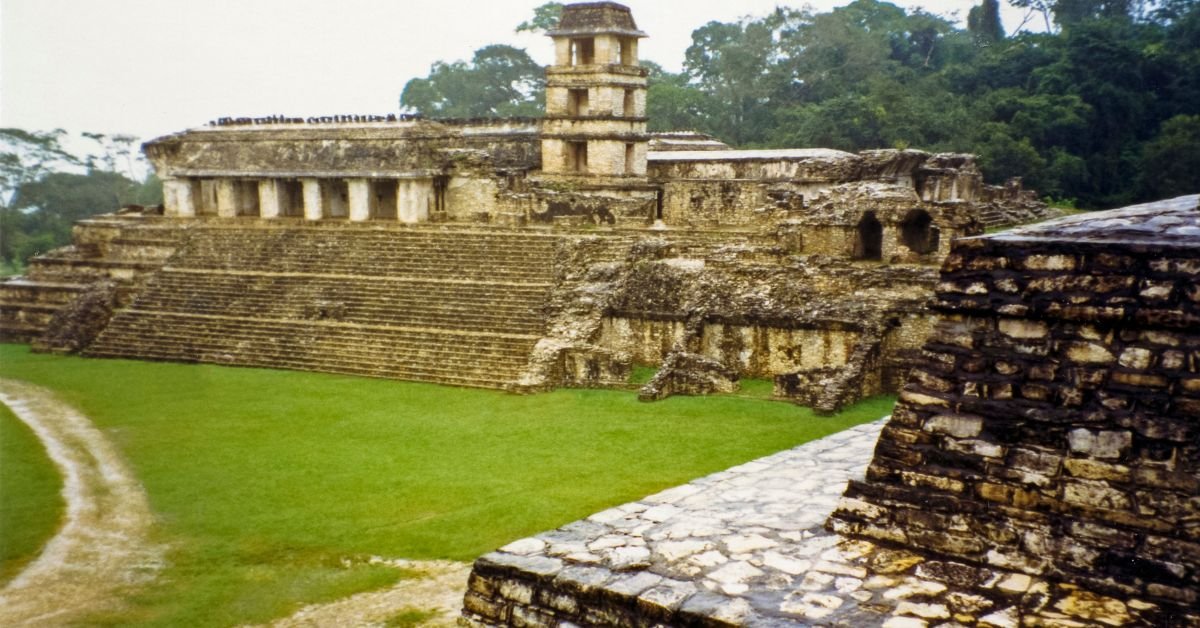It did briefly occur to me as we pulled out of the driveway on New Years Day 1994, that driving into Palenque might be more adventure than we were really ready for. The Zapatista uprising was making headlines, and my Mom was biting her nails – again. We had been planning the trip for months though, and having braved Hurricane Andrew a year and a half earlier we were still feeling pretty invincible.
Heading South
We took our time driving from Vancouver to Brownsville, Texas where we crossed the border into Matamoros, Mexico. We were surprised that the Mexican officials seemed nonplussed about the action further south. Nobody warned us against driving down there. The first part of the drive wasn’t exactly coastal as the highway stays inland until Tampico. We were using the Sanborn’s Driving Guide which was very, very thorough, yet we still got lost in Tampico. We drove in circles for half an hour before we figured out how to get through. Veracruz was a nice stop, and I was surprised at how much I liked the city. I was expecting a seedy port, and while Veracruz certainly is a seedy port, it is so much more. The blend of colorful colonial buildings, sand, and palm trees is lovely. Our first really interesting stop was Catemaco. We camped in town and wandered through the square after dark. The place has an odd vibe, probably something to do with the fact that it is the site of an annual Brujo Festival that attracts sorcerers from far and wide. The other oddities are the monkey islands where Macaque monkeys were abandoned after a research project in the 1970’s. Next stop was Coatzacoalcos, another Gulf port city and hometown of Selma Hayek. From there we continued east into the state of Tabasco, and the city of Villahermosa before finally crossing into Chiapas.

Kids With Guns
At this point, it was obvious something was going on. There were a lot more military checkpoints, and we were the only tourists heading into Chiapas. We were driving a VW Combi which is a very common sight in Mexico, however ours was sporting British Columbia tags, and that sparked a lot of curiosity. We had plenty of opportunity to practice our Spanish language skills every time we were stopped and questioned about our intentions. We had cobbled together a pretty cool interior for the van, complete with scuba gear storage, even tanks. I’m not sure how they would have felt about our spearguns if they had seen them. It meant pulling the van all apart every time a teenage boy with an M16 wanted to have a peek. We weren’t in a hurry though, and we never felt like we were in danger. I had a small atlas and a phrasebook that I pulled out whenever we were stopped, and I think it was pretty obvious that we were happy to hang out and chat.
Driving into Palenque was like arriving in a Ghost Town
When we were finally driving into Palenque, the owners of the campsite were very happy to see us, we were the only ones there! If you’ve ever been to Chichen Itza or Tulum you’ll know how awful it is to try to get a feel for the ruins with construction going on and kids screaming at you to get you to buy souvenirs. Our experience at Palenque was the polar opposite and “ruined” every other archeological site for us.

Palenque is located in the foothills of the Tumbalá mountains on a ledge overlooking the swampy flood plains between there and the Gulf. To the south is mountainous jungle, and the area has the highest average rainfall in Mexico. This gives the place a misty and mysterious vibe. There were only a handful of people on the site when we visited so the only sounds we heard were exotic jungle birds and howler monkeys. The irony of enjoying the stillness and peace at the ruins while the rest of the state was in the midst of a violent uprising was not lost on us, and we soaked in this unexpected gift. We could imagine the jungle waiting for the last of us to leave so it could try to absorb the ruins once again. It wouldn’t take long since it is estimated that only about ten percent of the ruins have been uncovered. It was a once in a lifetime experience, one I’ll never forget. After Palenque we continued on to Cozumel and then down to Xkalak where we had another interesting encounter with local military / law enforcement.

More about the Revolution:
In January 1994, a little-known group of rebels in the southern Mexican state of Chiapas launched a revolution that shocked the world. The Zapatista Army of National Liberation (EZLN) took control of several cities in the state, including the capital Tuxtla Gutiérrez, and declared war against the Mexican government. The uprising, known as the 1994 Chiapas Revolution, was a watershed moment in Mexican history and a wake-up call for the government to address the longstanding grievances of indigenous peoples and rural communities.
The roots of the revolution can be traced back to the early 20th century when Mexico underwent a process of modernization and land reforms. The government expropriated large estates and distributed land to peasant farmers, but the reforms were incomplete, and the new farmers often lacked the resources to make the land productive. Moreover, the government’s policies did not address the issue of indigenous peoples’ land rights, and many were displaced from their ancestral lands.
In the 1980s and 1990s, Mexico underwent a period of neoliberal economic reforms, opening up the country to foreign investment and free trade. The reforms exacerbated the inequalities between the urban and rural areas, and many indigenous communities were left out of the economic benefits. Moreover, the government’s policies of privatization and deregulation of natural resources led to the exploitation of the country’s forests, minerals, and water by foreign corporations.
In this context, the EZLN emerged as a response to the social and economic injustices faced by the indigenous communities in Chiapas. The group was founded in 1983 by a group of Marxist-Leninist intellectuals and indigenous leaders, who sought to create a movement that could challenge the Mexican government’s policies and advocate for the rights of indigenous peoples.
The revolution was launched on January 1, 1994, the same day that the North American Free Trade Agreement (NAFTA) came into effect. The EZLN seized several cities in the state, including San Cristóbal de las Casas, and demanded the government to address their demands, which included land reform, recognition of indigenous rights, and an end to the neoliberal economic policies.
The government responded with a massive military operation, sending thousands of troops to the region. The conflict resulted in a two-week-long battle, during which both sides suffered casualties. The government eventually declared a ceasefire, and the EZLN withdrew to the mountains, where they continue to operate to this day.
The 1994 Chiapas Revolution had a profound impact on Mexican politics and society. The uprising drew attention to the plight of indigenous peoples and rural communities and led to the recognition of their rights in the Mexican Constitution. Moreover, it paved the way for a new generation of social movements that sought to challenge the neoliberal economic policies and advocate for social justice.
Today, the EZLN remains active in the region, promoting indigenous rights and autonomy and advocating for a more equitable and sustainable economic model. The 1994 Chiapas Revolution is a testament to the power of grassroots movements and the resilience of indigenous peoples in the face of oppression and marginalization.
